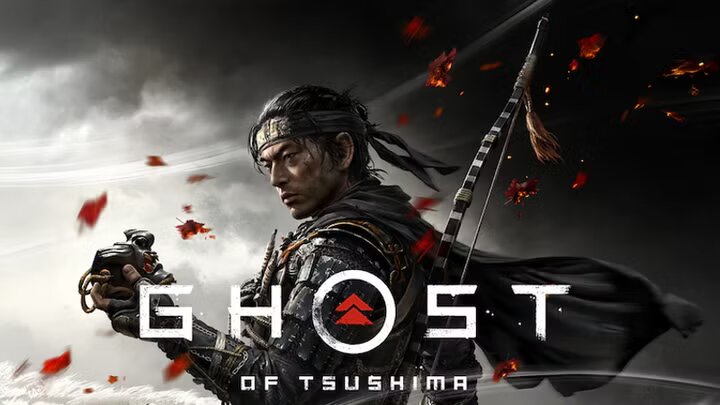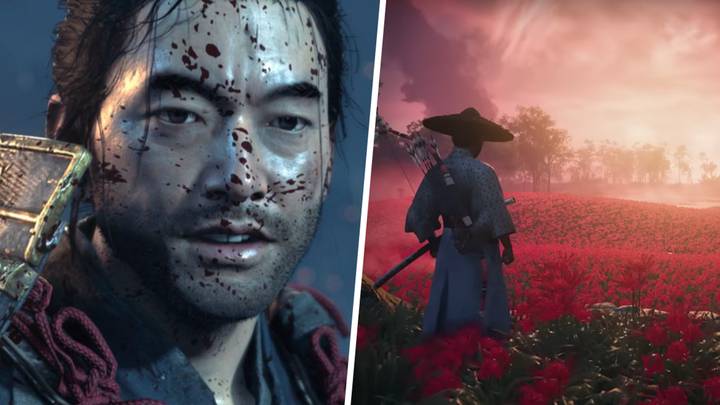Unveiling the Masterpiece: A Deep Dive into Ghost of Tsushima

Overview of the game
Ghost of Tsushima stands as a pinnacle in the gaming world, captivating players with its immersive open-world experience set in feudal Japan. Developed by Sucker Punch Productions and released in July 2020, the game takes players on an epic journey through the island of Tsushima during the Mongol invasion of Japan in the late 13th century.
Background and setting
The game is steeped in historical context, drawing inspiration from the real-life events of the Mongol invasion of Japan. Players assume the role of Jin Sakai, a samurai warrior, as he embarks on a quest to protect his homeland from the ruthless Mongol forces led by the cunning and relentless Khotun Khan. Tsushima Island serves as the battleground for this epic struggle, offering a rich and diverse landscape that players can explore and uncover its secrets.
Plot Summary
Protagonist and main characters
Jin Sakai emerges as the central protagonist, a skilled samurai torn between upholding the traditions of his warrior upbringing and adopting unorthodox tactics to combat the Mongol threat. Alongside Jin, players encounter a cast of compelling characters, including his uncle, Lord Shimura, who serves as both a mentor and a symbol of the samurai code, and Yuna, a resilient and resourceful thief who aids Jin in his quest.
Conflict and storyline progression
The core conflict revolves around Jin’s internal struggle as he grapples with the moral complexities of his actions and the necessity of adapting to survive in the face of overwhelming odds. As the game progresses, players witness Jin’s transformation from a loyal samurai bound by tradition to the eponymous “Ghost,” a stealthy and cunning warrior willing to forsake honor for the greater good.
Key events and turning points
Throughout the game, players navigate through a series of pivotal moments that shape Jin’s journey and the fate of Tsushima. From tense encounters with Mongol invaders to emotional reunions and betrayals, each event contributes to the narrative’s depth and complexity. Notable turning points include Jin’s decision to embrace the way of the Ghost, the climactic battles against Khotun Khan, and the resolution of Jin’s conflicts with his allies and enemies alike.

Gameplay Mechanics
Combat system
Ghost of Tsushima offers a fluid and dynamic combat system that seamlessly blends swordplay, stealth, and tactical warfare. Players can engage in visceral sword fights against multiple enemies using precise parries, dodges, and devastating finishing moves. Additionally, the game introduces stealth mechanics that allow players to approach encounters strategically, utilizing distractions, smoke bombs, and silent takedowns to outmaneuver their foes.
Exploration and open-world elements
The vast open-world of Tsushima is ripe for exploration, featuring lush forests, sprawling fields, and majestic mountains to traverse. Players can embark on side quests, discover hidden secrets, and engage in various activities such as haiku writing, bamboo strikes, and hot spring bathing. The game’s dynamic weather and day-night cycle further immerse players in its breathtaking landscapes, offering a sense of realism and immersion.
Role-playing features
In addition to its action-packed gameplay, Ghost of Tsushima incorporates role-playing elements that allow players to customize Jin’s abilities, weapons, and armor to suit their playstyle. By earning experience points and completing objectives, players can unlock new skills and upgrades across three distinct skill trees: Samurai, Ghost, and Stances. This customization adds depth and replayability to the game, empowering players to tailor their experience to their preferences.
Visuals and Sound
Graphics and art style
Ghost of Tsushima boasts stunning visuals and a meticulously crafted art style that brings feudal Japan to life with breathtaking detail and authenticity. From the vibrant cherry blossom trees to the intricate architecture of traditional Japanese villages, every aspect of the game’s visuals reflects a dedication to historical accuracy and artistic beauty. The attention to detail extends to character designs, animations, and environmental effects, creating a visually immersive experience that captivates players from start to finish.
Soundtrack and audio design
Complementing the game’s stunning visuals is a hauntingly beautiful soundtrack composed by award-winning musician Ilan Eshkeri and renowned Japanese composer Shigeru Umebayashi. The score blends traditional Japanese instruments with modern orchestral arrangements, evoking a sense of melancholy, tension, and triumph as players journey through Tsushima. Furthermore, the game’s sound design enhances the immersive experience, with authentic ambient sounds, weapon clashing, and voice acting that breathe life into the game’s world and characters.

Reception and Impact
Critical reception
Ghost of Tsushima received widespread acclaim from critics and players alike, praised for its stunning visuals, engaging gameplay, and compelling narrative. The game holds an impressive Metacritic score of 83/100 based on reviews from various gaming publications, with particular praise directed towards its open-world design, combat mechanics, and attention to detail.
Commercial success
In addition to its critical acclaim, Ghost of Tsushima achieved remarkable commercial success, becoming the fastest-selling first-party original IP for Sony Interactive Entertainment on the PlayStation 4 platform. Within its first three days of release, the game sold over 2.4 million copies worldwide, cementing its status as a blockbuster hit and a cultural phenomenon.
Cultural impact
Beyond its commercial success, Ghost of Tsushima left a lasting impact on gaming culture, sparking discussions about representation, cultural authenticity, and storytelling in video games. The game’s respectful portrayal of Japanese history and culture garnered praise from players and cultural critics alike, highlighting the potential of video games as a medium for exploring and celebrating diverse perspectives.
Legacy and Future
Influence on the gaming industry
Ghost of Tsushima’s success has undoubtedly influenced the gaming industry, inspiring developers to explore new settings, narratives, and gameplay mechanics. The game’s seamless integration of historical context with immersive gameplay elements has set a new standard for open-world action-adventure games, paving the way for future titles to follow in its footsteps.
Potential sequels or expansions
While Sucker Punch Productions has yet to announce a sequel or expansion for Ghost of Tsushima, the game’s commercial success and passionate fanbase make it likely that future instalments are on the horizon. Whether continuing Jin’s journey or exploring new characters and settings within the world of Tsushima, there is ample potential for the franchise to expand and evolve in exciting ways.
Continued support and community engagement
In the meantime, Sucker Punch Productions continues to support Ghost of Tsushima with updates, patches, and additional content, ensuring that players have plenty of reasons to revisit the game’s captivating world. Furthermore, the game’s vibrant community remains active through forums, social media, and fan-created content, demonstrating the enduring impact and appeal of Ghost of Tsushima among players worldwide.
In conclusion, Ghost of Tsushima stands as a masterpiece of gaming artistry, combining stunning visuals, immersive gameplay, and a captivating narrative to deliver an unforgettable experience. From its historical authenticity to its innovative gameplay mechanics, the game has left an indelible mark on the gaming landscape, inspiring players and developers alike to explore new horizons in interactive storytelling. As the legacy of Ghost of Tsushima continues to unfold, its influence on the gaming industry and cultural landscape is sure to endure for years to come.




